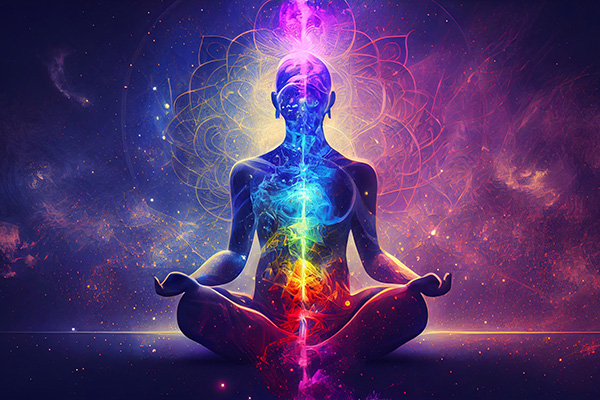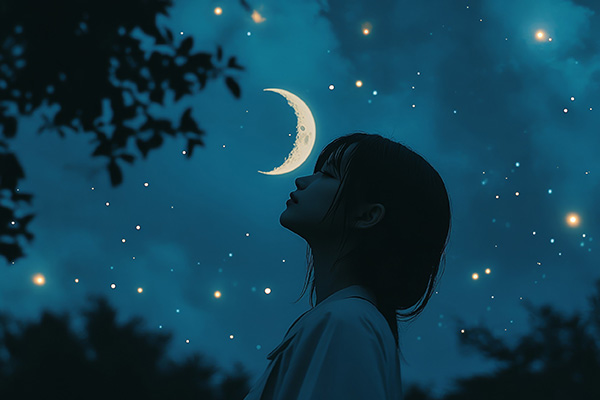Finding More Balance In A Busy World
 Do you ever feel the busier you become, the harder it is to remain focused and stay in control of everything? Then you are not, I promise you, alone! Sometimes life can seem like you are always juggling and struggling, but not always winning as a result.
Do you ever feel the busier you become, the harder it is to remain focused and stay in control of everything? Then you are not, I promise you, alone! Sometimes life can seem like you are always juggling and struggling, but not always winning as a result.
As a professional psychic, I have always been of the opinion that if we want something to manifest in the material world, we have to get the inside of ourselves, as well as our lifestyles, balanced and more harmonious first. Otherwise, we would simply attract more chaos.
By putting ourselves in a healthy, positive, and balanced place, we not only draw more abundance to ourselves, but we also achieve a less stressful lifestyle as a result.
This is not just spiritual philosophy; it’s energetic truth. The Universe is always responding to the vibration we emit. When we’re frantic, overextended, or emotionally scattered, we become magnets for more of the same.
But when we take steps to ground ourselves, reconnect with our inner guidance, and honor our natural rhythms, something beautiful happens: the energy around us begins to shift.
This shift isn’t just internal because others begin to notice it too. Opportunities feel more aligned, relationships grow more authentic, and daily life feels less like a struggle and more like a sacred flow. In essence, when we become energetically clear, we create space for the Universe to meet us halfway. That’s where true transformation begins. Continue reading
The Mysteries, Messages And Magic Of Meteorites
 Meteorites have long intrigued me as one of the great mysteries of the universe. They’ve fascinated me for years, not only because they survive their fiery descent through Earth’s atmosphere in such an epic and awe-inspiring way, but also because of their extraordinary origins.
Meteorites have long intrigued me as one of the great mysteries of the universe. They’ve fascinated me for years, not only because they survive their fiery descent through Earth’s atmosphere in such an epic and awe-inspiring way, but also because of their extraordinary origins.
Recently, I acquired a small piece of meteorite from Campo del Cielo, a renowned celestial fragment discovered by Spanish explorers in Argentina in 1576. It now graces my altar with it cosmic presence, enhancing the energy of my home and sparking some fun conversations!
Their origins are diverse. Some come from asteroids or comets, others from planetary bodies.
However, what I find especially captivating about these “messengers from space” is that they offer more than just scientific insights into the birth of our solar system.
Even more compelling is the spiritual and esoteric significance they’ve held throughout human history. Across time and tradition, they continue to be revered as powerful allies in spirituality and metaphysics.
Many lithotherapy practitioners believe meteorites are gifts from the divine, reminding us of our eternal connection to the cosmos. They are symbols of spiritual awakening, transformation, and divine wisdom.
Ancient civilizations used them for meditation and healing, to connect with higher realms, and to catalyze personal growth. Because they are quite literally “otherworldly,” meteorites offer us a cosmic perspective and invite us to reflect on our place within the grand tapestry of existence.
How To Be Mindful On The Go!
 To some individuals, being mindful while on the go might seem a contradiction in itself. However, the truth of the matter is that there are a plethora of ways to cultivate the art of mindfulness that do not involve simply sitting still.
To some individuals, being mindful while on the go might seem a contradiction in itself. However, the truth of the matter is that there are a plethora of ways to cultivate the art of mindfulness that do not involve simply sitting still.
People turn to mindfulness for many reasons. For example, they may have a medical condition that needs managing, work issues that require resolving, or just simply want to feel more present in their everyday lives.
With the pace of modern life, it is clear to see why people become easily distracted and lead somewhat complicated lives as a result – all of which can be both emotionally and physically draining.
Whatever the reasons may be as to why a person turns to mindfulness, it should, indeed, help them to create a more balanced lifestyle.
That said, mindfulness should not be seen as a magical cure-all, but more an efficient way of relating to personal issues differently.
Interestingly, research has revealed that physiological changes do actually take place within an individual practicing mindfulness meditation. Such changes occur within the brain and some people experience better blood pressure and an enhanced immune system.
The above said, even those among us who practice mindfulness faithfully, can find it somewhat challenging to take what we have learned and incorporate it into our everyday lives. Instead, we tend to allow ourselves to be distracted and develop automatic behavior patterns instead.
Transform Your Energy With Color Meditation
 Did you know that color therapy can balance and enhance your life emotionally, physically, and spiritually? It’s true! Colors are not just visual experiences. They are frequencies of light that interact with our own energy field, impacting how we feel, think, and behave.
Did you know that color therapy can balance and enhance your life emotionally, physically, and spiritually? It’s true! Colors are not just visual experiences. They are frequencies of light that interact with our own energy field, impacting how we feel, think, and behave.
Through the ages mystics, healers, and shamans have known what modern holistic practitioners are rediscovering: color is a potent healing tool.
From the fiery strength of red to the tranquil peace of blue, the visible spectrum offers a rainbow of resources for personal transformation. Every color carries its own vibration, and these subtle energies can be harnessed intentionally to support healing, clarity, and spiritual growth.
It can be used to stimulate your chakras, enhance your aura, and create harmony between your inner and outer worlds.
One profoundly effective way to connect with the power of color is through visualized meditation. When you consciously focus on a specific color during your meditation practice, you create a sacred bridge between intention and manifestation.
This focus calibrates your energy field to resonate with the energetic essence of that color to benefit your mind, body and soul.
The key to using color effectively is to align it with your current emotional or energetic needs. For instance, if you seek renewed optimism and joy, immerse yourself in the golden glow of yellow. Feeling emotionally tender or overwhelmed? A soft green can soothe and restore your heart. Rich reds can energize and ground, while blues invite calm and clear expression.
Why Astral Projection Is A Popular Psychic Practice
 Years ago, my best friend told me that she was having what she described as “floating experiences.” She said that, as she was winding down for the night in bed, she would suddenly feel as though her spirit were drifting above her body. She was really unsettled by this at the time, because she was not trying to make it happen, nor did she feel in control of it.
Years ago, my best friend told me that she was having what she described as “floating experiences.” She said that, as she was winding down for the night in bed, she would suddenly feel as though her spirit were drifting above her body. She was really unsettled by this at the time, because she was not trying to make it happen, nor did she feel in control of it.
At the time, I was deeply involved in psychic development. I spent my evenings buried in books, engaged in discussions, and exploring various spiritual practices.
The moment she described her experiences, I knew exactly what she was talking about. I realized she was describing astral travel. It was nothing new to me, as I had been practicing it myself for quite some time.
Astral travel is the experience of your mental awareness, or your “conscious self,” separating from your physical body and exploring other realms of existence. It’s the experience of your inner being, your soul or spirit, moving beyond the limits of time and space and the restrictions of the material world.
Once you “leave” your physical body, earthly rules no longer apply. Gravity and distance as we know it no longer apply. Some travelers report visiting faraway places on Earth, while others explore entirely different realms or even other planets. For many, this experience proves that we are more than flesh and bone. We are souls with vast potential.
Aligning With Lunar Energy Can Transform Your Life
 The Moon may appear subtle and serene in the night sky, but don’t be fooled. Her influence on our lives runs deep.
The Moon may appear subtle and serene in the night sky, but don’t be fooled. Her influence on our lives runs deep.
Many of us feel her pull, experiencing everything from restless sleep to emotional surges, even if we don’t quite understand why. Her cycles are ancient, her rhythm is eternal, and her whispers can guide us toward profound inner harmony if we choose to listen.
The Moon has been a source of mystery, reverence, and deep spiritual connection for humanity since the dawn of civilization. Across cultures and generations, she has been worshiped as a deity, tracked as a celestial guide, and honored through rituals that align with her phases.
Ancient civilizations such as the Babylonians, Egyptians, and Greeks meticulously studied her movements, associating them with tides, fertility, and even the passage of time.
The lunar calendar, still used in various traditions today, reflects the importance of her cycle, shaping religious observances like Ramadan and the Chinese New Year.
Her phases—waxing, full, waning, and new—have inspired countless traditions rooted in transformation and renewal. The Full Moon, in particular, has been regarded as a time of heightened energy, illumination, and manifestation.
In the realm of personal and spiritual health and well-being, the Moon is also much more than a celestial body. She is a divine force and a sacred mirror to our innermost energetic tides. By syncing with her cycles, we can unlock a deeper connection to ourselves, the Earth, and the Universe.

